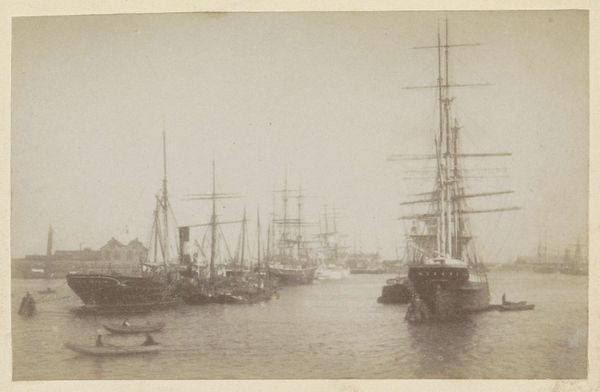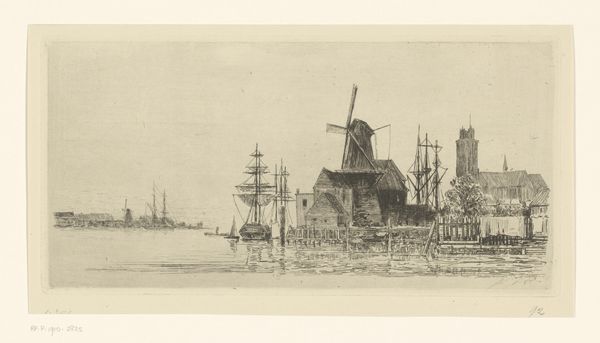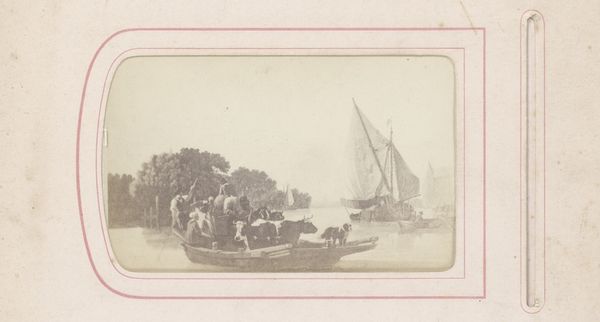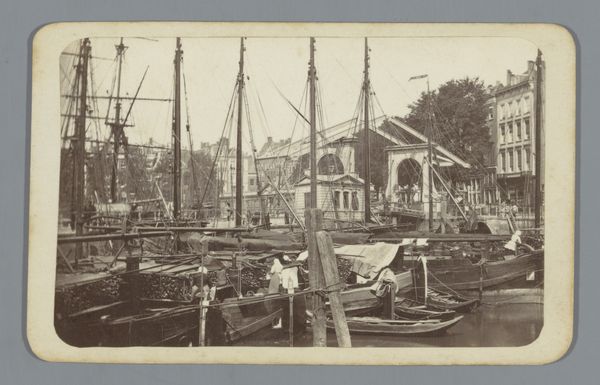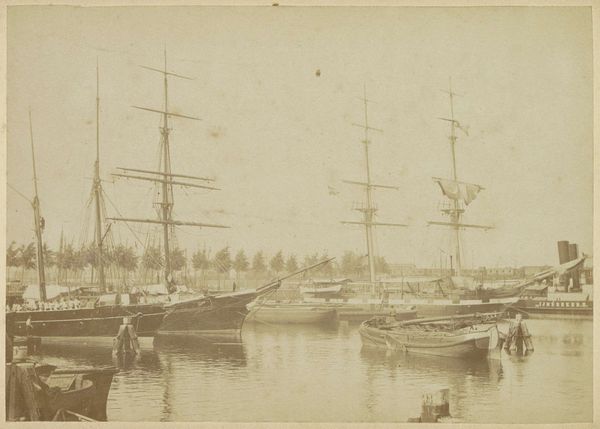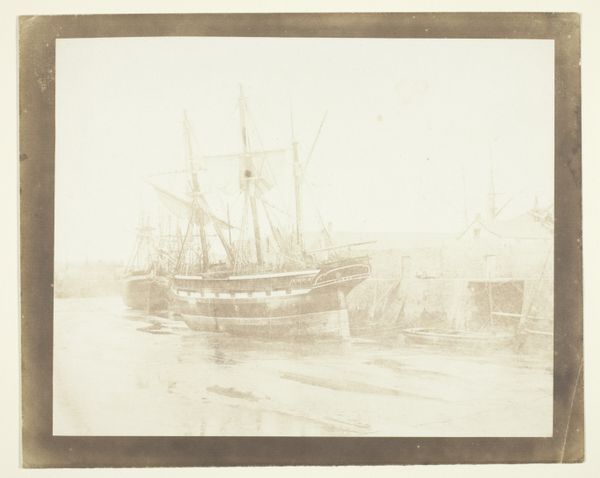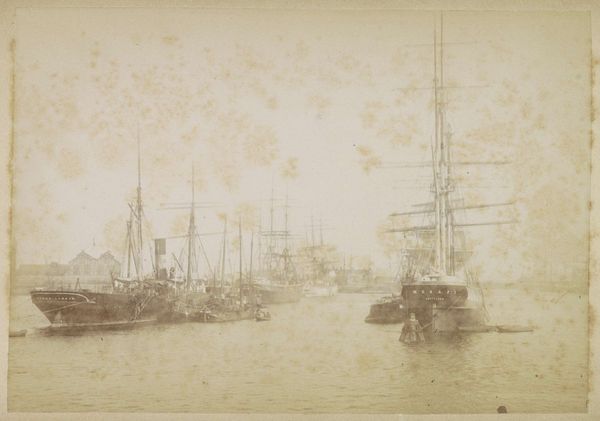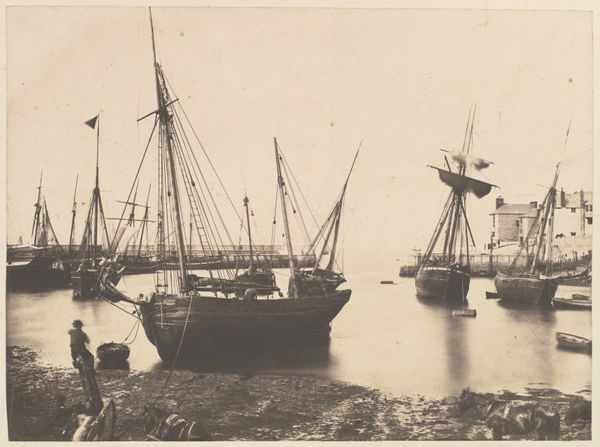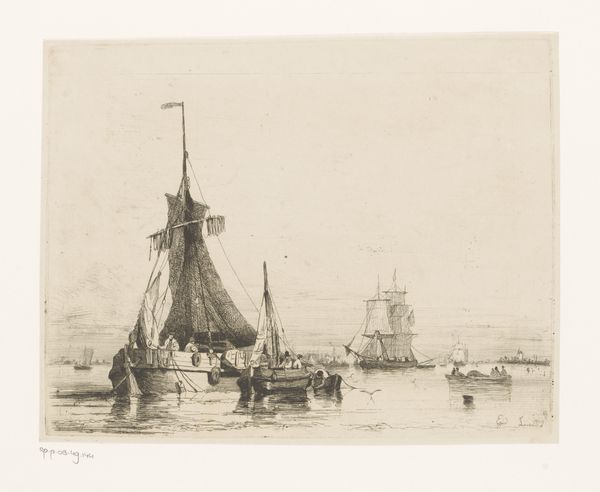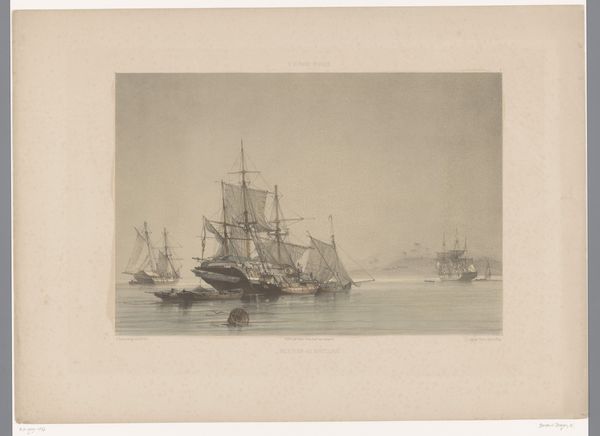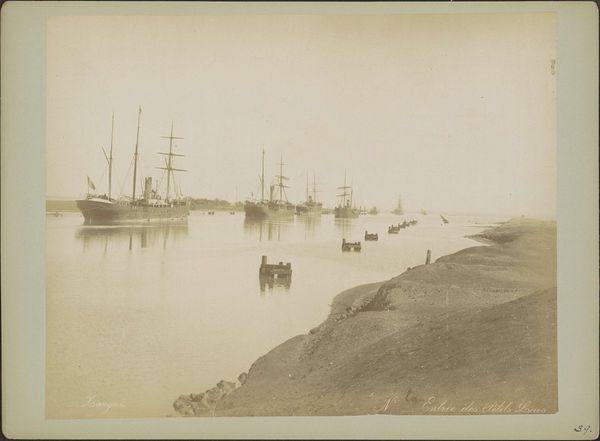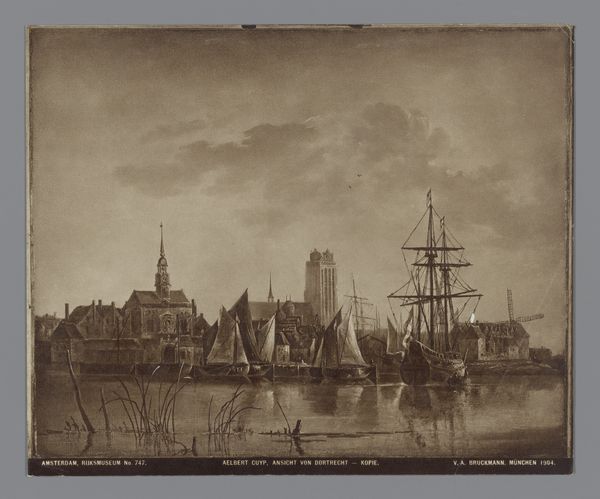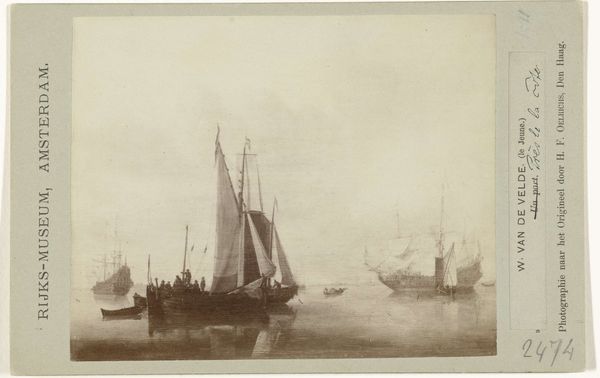
Fotoreproductie van een schilderij van Andreas Achenbach: An einer Amsterdamer Gracht after 1871
0:00
0:00
Dimensions: height 220 mm, width 270 mm
Copyright: Rijks Museum: Open Domain
Editor: This gelatin-silver print, a photographic reproduction of Andreas Achenbach's painting "An einer Amsterdamer Gracht," was created sometime after 1871. I find it remarkable how this photograph emulates the atmospheric quality of 19th-century landscape paintings, specifically the sense of serenity. How do you interpret the social or cultural relevance of reproducing a painting through photography during that period? Curator: That's a keen observation. The act of reproducing paintings like this through photography speaks volumes about the democratization of art at the time. Before photography, access to art was largely limited to the wealthy elite who could afford original paintings or visit private collections. What we see here is a way of distributing images and, therefore, culture more widely, participating to an emergent art market. Editor: So, this was about broadening accessibility to art for the masses? Curator: Precisely. It's a form of cultural dissemination, impacting how people understood their world. It also plays with notions of authenticity and value, because what happens to the status of the original painting when widely distributed copies become available? Does the photograph challenge the conventional hierarchies within the art world itself? Editor: Interesting, that brings new thoughts! So, it's not just about making art available but also subtly questioning its value and challenging its exclusive status. Curator: Exactly. The mass availability of art images impacted our relationship with art. We often view older photography, such as this piece, through a modern lens that appreciates it aesthetic value and historical importance. Editor: It does make you consider how access and distribution influence not just who gets to see art, but also what art is perceived as valuable. Thank you, it definitely offers a fresh angle on art history! Curator: My pleasure.
Comments
No comments
Be the first to comment and join the conversation on the ultimate creative platform.
